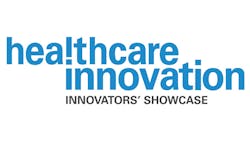Healthcare solutions company e4 has assisted eight clients with their electronic health record (EHR) and patient accounting systems (PAS) system conversions. During the conversion and post go-live timeframe, there is inevitably a large number of “edits” that must be worked by an individual to move an encounter to the billing state of the revenue cycle process.
As such, e4 has developed an edit resolution workflow that is not only aimed at resolving the edits, but also at training and educating the client’s staff, allowing end-users to be self-proficient within 30 to 60 days from the process implementation.
The background
Our client engaged e4 Revenue Cycle team to get the organization back to its pre go-live EHR and PAS metrics. One of the first issues to tackle was the large number of edits that were in the system work queues. As of last December, there were more than 18,000 encounters in five work queues. The work queue with the largest number of encounters was the “incomplete verifications summary” with 6,617. The encounters were identified by location, and the top 10 locations accounted for 74 percent of the total encounters. The location with the single most edits in the work queue had 1,232 encounters.
The client has a decentralized operation for insurance verification, meaning each location is responsible for checking patients in and ensuring the insurance on record is still active and assigned to the appropriate encounter. A decentralized patient access (or registration) operation requires the creation of standard work documents to support on-going training and education functions. As staff is turned over, new employees must be trained in the same manner as the existing staff to ensure consistency in operations.
The e4 process
e4 used LEAN Engineering pillars: people, process and technology in creating this Revenue Cycle Edit Work Queue Optimization. After observing this need at many client sites and not having the personnel to provide the service, e4 went out to hire the people to perform this work over the course of a few months.
Each day, e4’s Revenue Cycle Edit Work Queue Optimization team met with e4’s patient access subject matter expert (SME) who was providing daily training and education to the client staff via webcast. The work queue team provided examples of identified issues to the patient access SME who in turn created custom training using the active incomplete verification summary. Finally, workflow documents were updated to include the lessons learned from e4 to prevent the same errors from being made.
As this LEAN Engineering operation continued, e4 and the client leveraged the Plan, Do, Study, Act (PDSA) process to modify the training coming from the e4 patient access SME to the client locations. As the workflow continued to be re-tooled with learnings from the client locations, the daily training changed with what the work queue optimization team was seeing during their reviews.
Getting better every day
e4 also shared weekly progress with the client’s revenue cycle executives and stakeholders. This messaging reinforced the importance of working the work queue’s every day to the client’s employees and was seen as a reward to the client locations that were making notable progress every week. The client was learning from their mistakes and getting better every day.
In less than 30 days, e4 and our client were able to bring the number of encounters in the insurance verification work queue down from 6,617 to 427, which is less than two days of encounters. This is a 94 percent reduction from the starting point. It is also of importance to note this work was done starting in early December to early January.
Productivity redefined
e4 Revenue Cycle also utilized the home-grown productivity tool, e4sight, which captures data that enables e4 to offer custom staff augmentation/support services related to revenue cycle operations. Our goal is to provide clients with support services during critical times and get them back to a stable-state before ending our engagement. In breaking down the data and how the work queue performance results were accomplished, e4 touched two-thirds of the total encounters on the work queue. The remaining one-third of the work queue was worked during the custom training and education sessions with each client location and, most importantly, by the client themselves as they learned how to be self-sufficient in the work queues.





